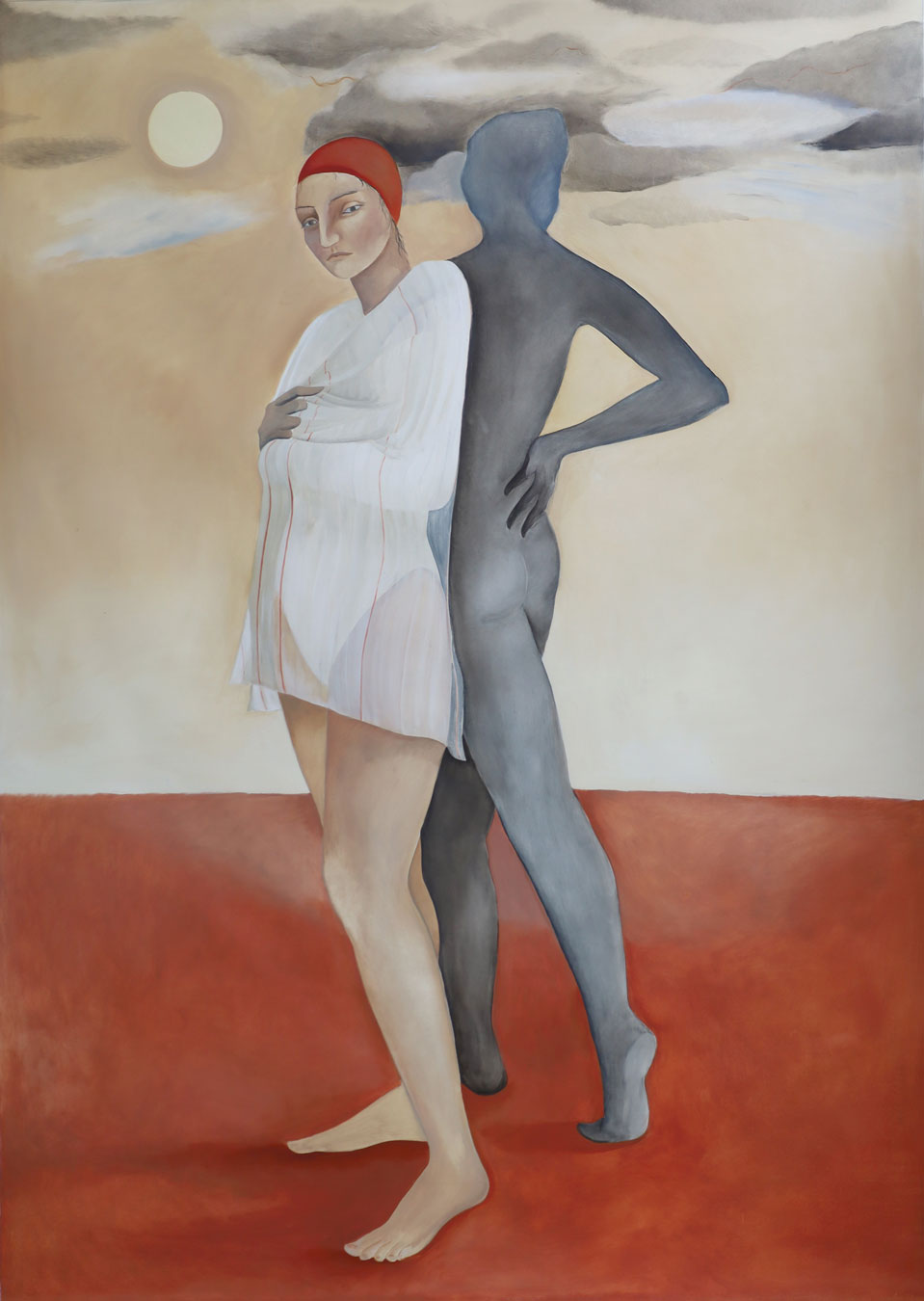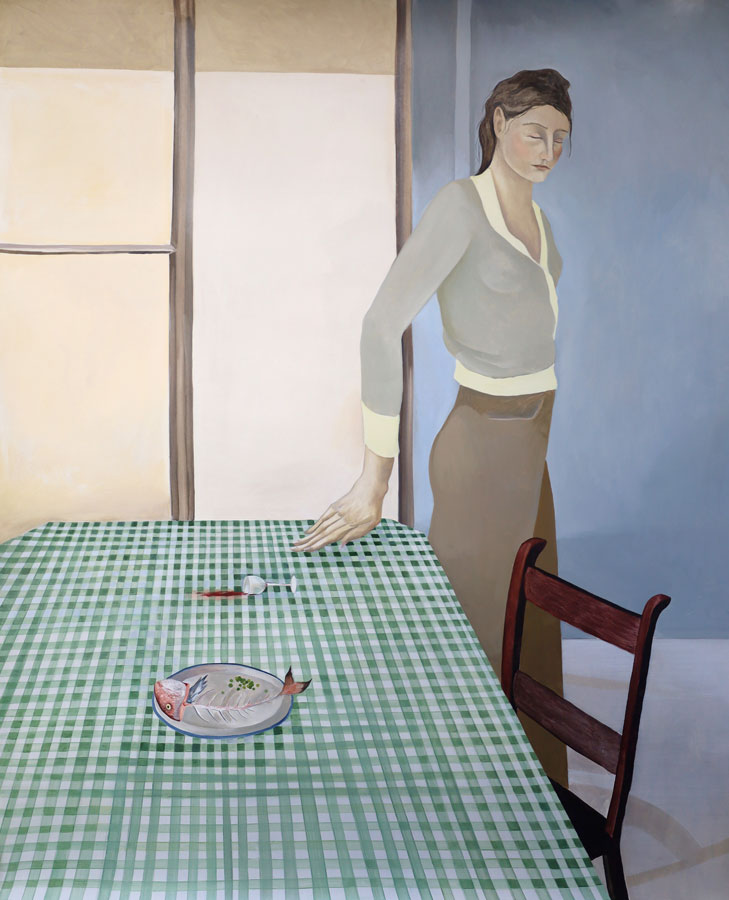This text was commissioned on the occasion of Raphael Barratt’s solo exhibition, Equinox. The text is written by Rachel Campbell-Johnston, Chief Art Critic for The Times.
The image is understated. A woman is standing in a domestic room. Her clothing is simple. Her expression is calm. And she, it would seem, has just finished a solitary dinner. Her plate lies on the table from which she has arisen, pushing a single chair a little askew. Nearby, a small glass of wine lies toppled. It spills a crimson stain onto the chequered tabletop. Apart from that, few details are described. Soft light from a window diffuses through all-but abstract spaces. It picks out tones, shapes and shadows with a fragile touch.
Do not, however, mistake the understated for the dull; the domestic for the ordinary; the composed for the commonplace. It is precisely in their restraint that these recent works by Raphael Barratt find their greatest strength. Simplicity, as Leonardo da Vinci so famously put it, is the ultimate sophistication. It is their pared-down simplicity that makes these paintings so striking. It is the fact that they are striking which compels you to take a further look. And the longer you stand looking, the more complex, the more captivating, the more sensitive they will start to feel.
Take the picture just described. Barratt can explain a few of its origins and influences. Some are personal. She remembers the green-and-white chequered table from her childhood. The clothes which the woman wears have been borrowed – as in many of the images – from Barratt’s own wardrobe. Yet this painting is not directly autobiographical. The eaten fish on the table recalls a Roman mosaic that caught her eye. Together with the spilt wine, it alludes to Christian iconography. The title – Leaving the Table – is taken from a Leonard Cohen song: a haunting ballad about the acceptance of life’s impermanence.
Barratt’s paintings, she explains, arise always from powerful feelings. Sifting slowly through layer upon layer of experience and memory, she searches for clarity. It’s a bit like being an archaeologist, she suggests. The extraneous stuff is gently swept away. Gradually, an image emerges. It distils the essence of the emotion which she wants to evoke.
Leaving the Table is far more than some mundane domestic scene. Look, for instance, at that glass of spilt wine; its stain a bright focal point at the heart of the picture. The mind starts to play with possibilities. What can it mean? The woman may not look, but clearly it matters. Her hand gestures towards it. But her eyes are closed. What lies behind those lids? Is she as composed as you might at first have presumed? Or are her thoughts coming loose like that single straying lock of her neatly swept-back hair? Does the stillness of her face mask an inner loneliness, a memory of suffering, a moment of sacrifice? The image may look a bit like a still from some film. But it is not a narrative. Rather, it is a picture that captures an atmosphere, a mood.

Raphael Barratt. The Warmth of Shadows (2024)
A sense of intangible tension pervades all the paintings in this exhibition. The title, Equinox, conjures a sense of the complex interplay. Look at The Warmth of Shadows, for instance. A pair of monumental figures are posed back-to-back. But it is neither the delicately delineated female bather in the foreground nor the shadowy figure beyond that become the subject. It is the relationship between them. Is their balletic contrapposto at the point of unbalance? The dark figure pivots on one hip. Are they about to draw away, or might they swing around to embrace? The pale woman, eyes wide and cautious, draws the translucent veil of a towel protectively close.
Underpinned by a strong almost schematic style of draughtsmanship which Barratt developed during her time as a student at the Royal Drawing School, these pictures are possessed of a fundamental simplicity: as timeless in its way as some ancient artefact. The ageless stories of myth, the magic of fairy tales, the symbolism of the mediaeval, the intimacy of the Eastern miniature, all find their echoes in Barratt’s work. Yet her images, built up layer after translucent layer, amount to something also more modern. You can find this not just in the contemporary figures but in the expressive flashes of colour, the sudden blazes of redness or electric blues. You can see it in stares that are wider than natural; discover it in the abstracted openness of space. Together, all these elements build up to make images that feel as elusive as they are evocative. That visual directness which first snatches your attention, leads you ever deeper into ever more densely ambiguous lands.
(By Rachel Campbell-Johnston)
